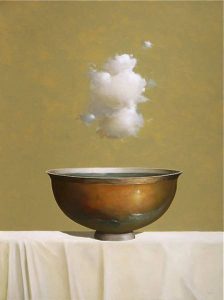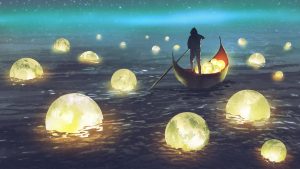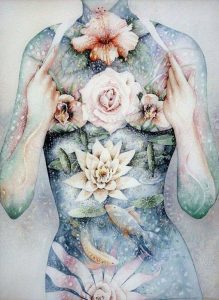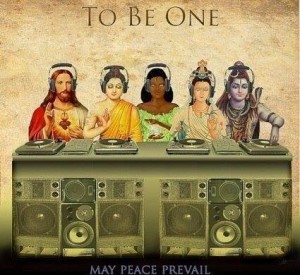 The Yogabliss, Your Heart Life on-line Moving into Meditation classes met this morning. We explored the practice of compassionate self reflection. In slowing down, meeting what is true with kindness, we can learn about ourselves and others. Gving and receiving kindness can invite safety and trust. In our world of relationship, so much more is possible when we feel safe.
The Yogabliss, Your Heart Life on-line Moving into Meditation classes met this morning. We explored the practice of compassionate self reflection. In slowing down, meeting what is true with kindness, we can learn about ourselves and others. Gving and receiving kindness can invite safety and trust. In our world of relationship, so much more is possible when we feel safe.
We drew inspiration from Cedric Jamet’s collective poem. He describes the process of collective poetry making in his essay: Poems from Me to We: Harvesting Humanness.
We read excerpts from Mark Nepo’s book, More Together than Alone. Mark is a poet, teacher and storyteller. His inspirational work speaks to our human spirit. His writing is compassionate, encouraging and inspirational.
We heard Rosemerry Wahtola Trommer’s poem Belonging. Rosemerry is also a poet, teacher and storyteller. She’s been writing a poem a day since 2006. She’s shared her work and encouraged others to develop their own creativity in many places including: recovery programs, mindfulness retreats and hospice settings.
How is to be in this human body today? If you like, you can move your awareness through your body. You might let it flow through your your feet, ankles and legs. Knees thighs and hips. The bowl of your pelvis. Belly and low back. Rib cage, heart and lungs. Shoulders, arms, elbow, wrists and hands. Neck and head. Face, eyes, ears, nose and tongue. A sense of your brain.
Can you make space for all that your body holds? Can you let this be compassionate self reflection? If you like you can reflect on the gifts of your parents and ancestors. The experiences of relationship, growing and learning. The sense memories of touching and being touched. The ease of wellness and the marks of injury and illness. I invite you to notice was surfaces as you reflect on your embodied experience.
Can you make space for what your heart holds? How do you feel in relation to others? The love and affection given and received. The pain of disappointment and loss. The fullness of being seen, heard and understood. Can you take as much space as you need to consider what surfaces. Notice your response to these queries.
 Can you make space for the way your mind makes meaning? What assumptions, attitudes and beliefs surface? Do they bring you closer or take you further away from a sense of wholeness inside or a sense of connection to others? Can you let these observations be without having to judge them?
Can you make space for the way your mind makes meaning? What assumptions, attitudes and beliefs surface? Do they bring you closer or take you further away from a sense of wholeness inside or a sense of connection to others? Can you let these observations be without having to judge them?
In compassionate self reflection, you might feel your breathing and notice this momentary awareness. You may notice its nature is to change and how you relate to the changes. Perhaps you notice how it arises from a vast web of connection and experience. We practice compassionate self reflection so that we may see more clearly. Seeing clearly enables us to act skillfully in the world. Cultivating compassion enables us to serve skillfully in the world. Here is Cedric James collective poem from his essay: Poems from Me to We: Harvesting Humanness:
 on our shoulders
on our shoulders
is our father’s boat
on our shoulders
are bridges and boats that are not build yet
on our shoulders
is the responsibility to be
better ancestors
and better descendants
on our shoulders
is our need to learn, care, connect
and tap into the wisdom
of doing without knowing
on our shoulders
are our lives of privileges
on our shoulders
are our lives of oppressing
and of being oppressed
and of being afraid
 on our shoulders
on our shoulders
ithe need to celebrate and hold curiosity
fercely
and with humility
learn to be with what is needed now
burst our bubbles
wth kindness and humility
and grace
on our shoulders
are the curtains that have been pulled
from our eyes
and a world that is not what we thought it was
and the need to see
on our shoulders
is the need for a tower
to find the 100 pairs of eyes
that will help us see the world
We just had the experience of compassionate self reflection: an integral part of mindfulness practice. It’s about taking care of our hearts. Sometimes self reflection is about unburying what is alive and motivating our feelings, thoughts and actions. This aliveness aims to keep us safe and it can also cause suffering. What is buried can keep us from living, loving and serving more skillfully in the world.
Taking care of our heart is not so different from taking care of another’s heart, even the heart of the world. Our hearts grow heavier and heavier as we witness conflict and injustice. We don’t know how to alleviate great suffering. There can be overwhelm. There can be great tenderness.
Mark Nepo reminds us – in his book of the same title – that we are More Together than Alone. He writes:
We’re beautifully born whole, though no one can escape the journey of trauma that undoes us. Yet, in time, we can be put back together, if given the chance to know and be known thoroughly. Putting ourselves back together, by finishing what is unfinished within us and between us, allows community to form.
. . . [It’s[ about . . . . choosing love over fear, of choosing the big raft over the little raft, of accepting that we are interdependent creatures who, given the chance, will make honey of our suffering. I keep saying it like a prayer . . . : we are more together than alone.
 “Putting ourselves back together, finishing what is unfinished within us and between us, allows community to form.” The work of repairing the world starts with the work of healing our hearts. You can start with your own heart. I invite you to offer it loving awareness, curiosity and mercy. You can begin your day in stillness with a question: How can I live in a way that’s healing? Find the question that deeply resonates with you. Our lives can become healing journeys. We travel with humans and more than humans. We are more together than alone.
“Putting ourselves back together, finishing what is unfinished within us and between us, allows community to form.” The work of repairing the world starts with the work of healing our hearts. You can start with your own heart. I invite you to offer it loving awareness, curiosity and mercy. You can begin your day in stillness with a question: How can I live in a way that’s healing? Find the question that deeply resonates with you. Our lives can become healing journeys. We travel with humans and more than humans. We are more together than alone.
Rosemary Wahtola Trommer’s poem Belonging speaks to our life’s healing journey:
And if it’s true we are alone,
we are alone together,
the way blades of grass
ae alone, but exist as a field.
Sometimes I feel it,
the green fuse that ignites us,
the wild thrum that unites us,
an inner hum that reminds us
of our shared humanity.
Just as thirty-five trillion
red blood cells join in one body
to become one blood.
Just as one hundred thirty-six thousand
notes make up one symphony.
 Alone as we are, our small voices
Alone as we are, our small voices
weave into the one big conversation.
Our actions are essential
to the one infinite story of what it is
to be alive. When we feel alone,
we belong to the grand communion
of those who sometimes feel alone—
we are the dust, the dust that hopes,
arising of dust, a thrill of dust,
the dust that dances in the light
with all other dust, the dust
that makes the world.


